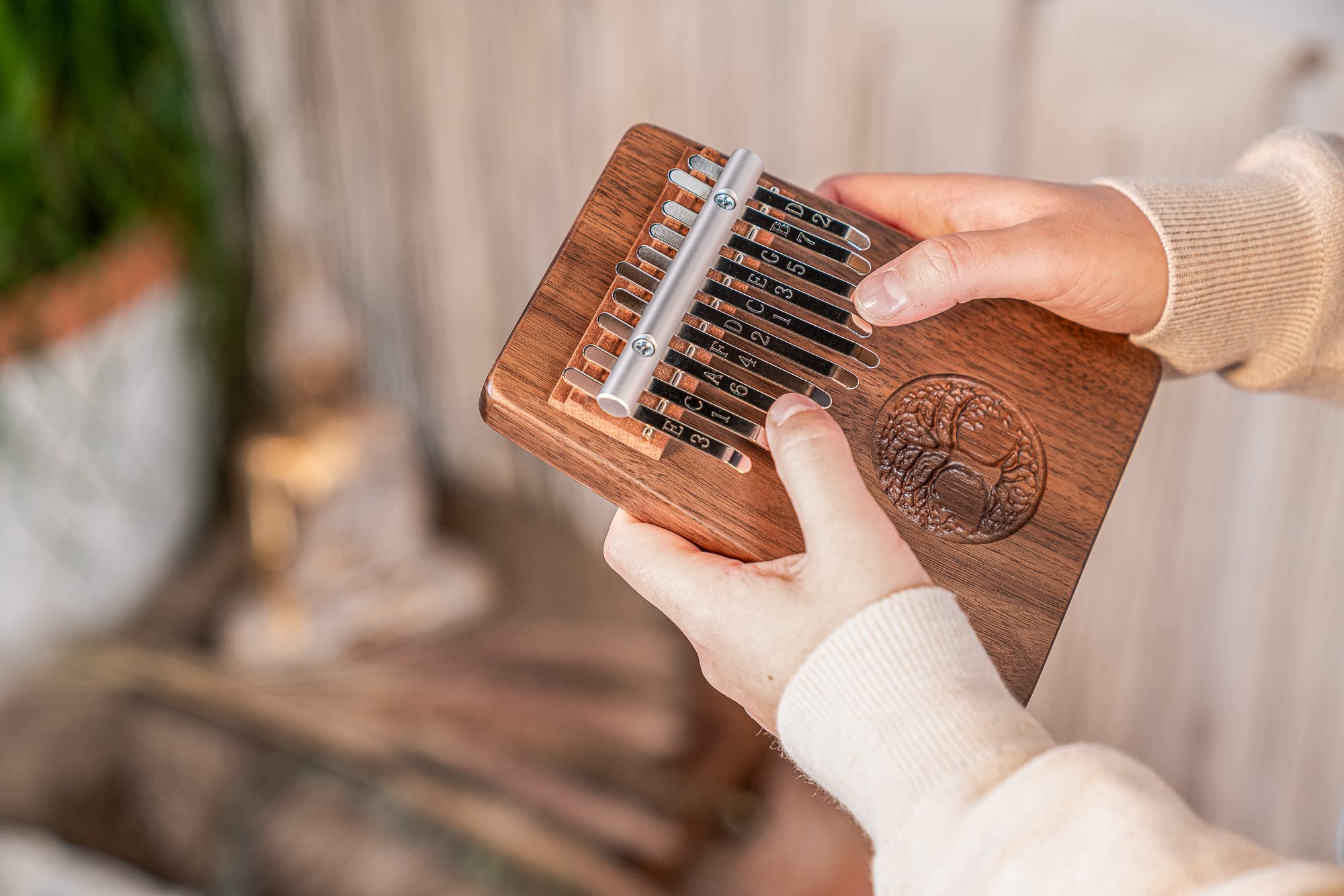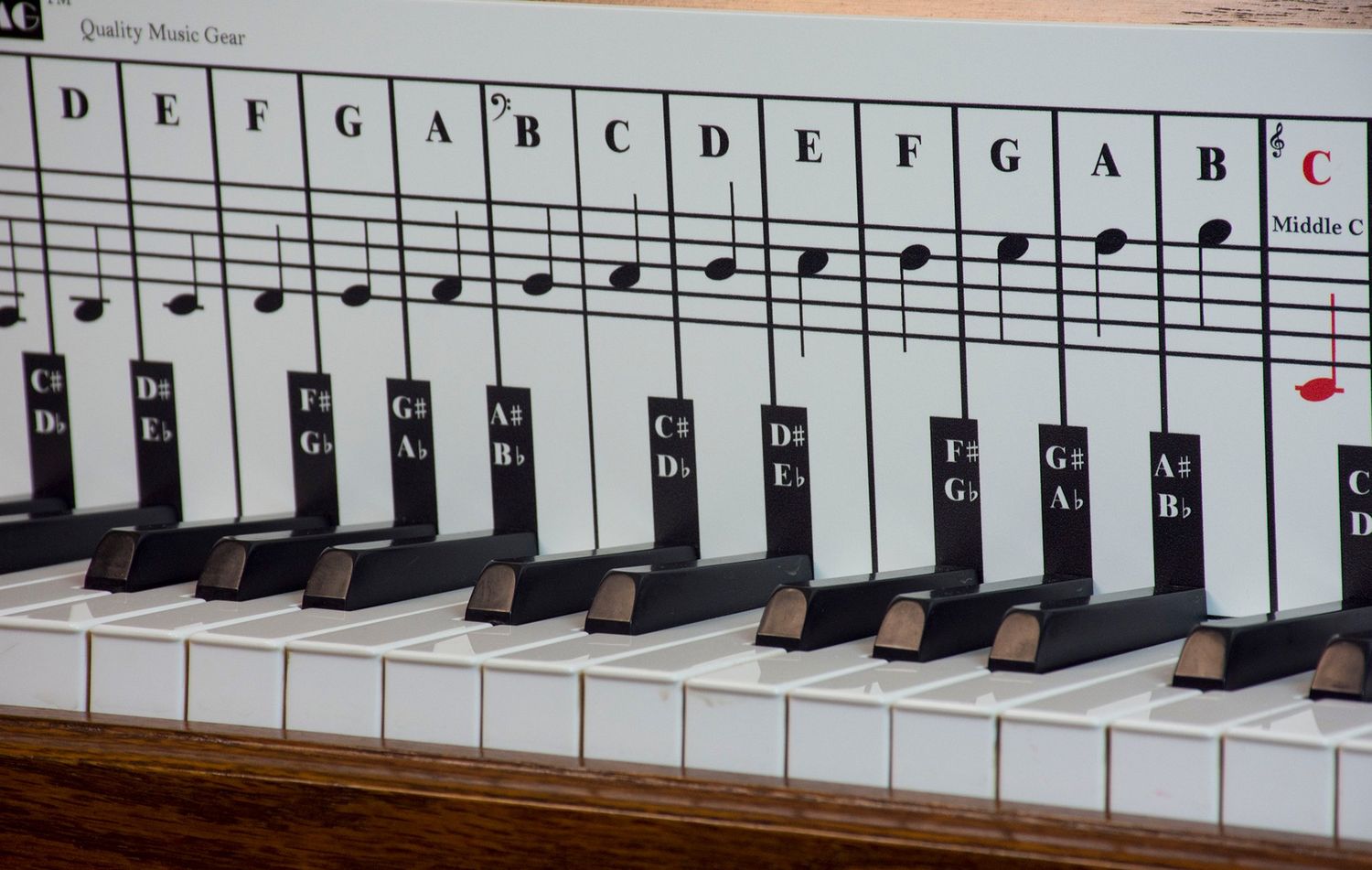Home>Instruments>Piano>How To Play A Melody On Piano


Piano
How To Play A Melody On Piano
Published: February 10, 2024
Learn how to play a beautiful melody on the piano with our step-by-step guide. Master the art of playing piano and impress your audience.
(Many of the links in this article redirect to a specific reviewed product. Your purchase of these products through affiliate links helps to generate commission for AudioLover.com, at no extra cost. Learn more)
Table of Contents
Introduction
Playing the piano is a rewarding and fulfilling experience that allows individuals to express their creativity and emotions through music. Whether you're a beginner or an experienced musician, learning how to play a melody on the piano can be a delightful journey. In this article, we will explore the essential steps to help you master the art of playing a melody on the piano, from understanding the keyboard layout to practicing tips that will enhance your skills.
The piano, with its rich history and timeless appeal, has been a cornerstone of musical expression for centuries. From classical compositions to contemporary hits, the piano's versatility makes it a captivating instrument for musicians of all genres. Whether you aspire to play soulful ballads, intricate classical pieces, or catchy pop tunes, mastering the art of playing melodies on the piano is a valuable skill that opens the door to a world of musical possibilities.
As we delve into the intricacies of playing a melody on the piano, it's important to approach this journey with an open mind and a willingness to learn. While it may seem daunting at first, with dedication and practice, you can develop the proficiency and confidence needed to captivate audiences with your musical prowess.
Throughout this guide, we will cover fundamental aspects such as understanding the keyboard layout, reading sheet music, finger placement techniques, and practical tips to help you refine your skills. By the end of this article, you will have gained valuable insights that will empower you to embark on your piano-playing journey with enthusiasm and determination.
Whether you're a novice eager to explore the wonders of piano melodies or a seasoned pianist seeking to refine your technique, this comprehensive guide will equip you with the knowledge and tools necessary to play captivating melodies on the piano. So, let's embark on this musical odyssey and unlock the enchanting world of piano melodies together.
Understanding the Keyboard
Before diving into the intricacies of playing melodies on the piano, it’s essential to familiarize yourself with the layout of the keyboard. The standard piano keyboard consists of 88 keys, including white and black keys, spanning seven octaves. Each octave comprises a specific pattern of 12 keys, encompassing both natural notes (A, B, C, D, E, F, and G) and their corresponding sharp or flat notes.
As you acquaint yourself with the keyboard, you’ll notice that the black keys are arranged in groups of two and three, creating a repeating pattern across the entire keyboard. These black keys represent the sharp and flat notes, adding depth and complexity to the musical arrangements you’ll create.
Understanding the layout of the keyboard is crucial for identifying different notes and developing an intuitive sense of musical intervals. As you progress in your piano-playing journey, this familiarity with the keyboard will enable you to navigate through scales, chords, and melodies with confidence and precision.
Additionally, familiarizing yourself with the concept of hand positioning is vital for mastering the keyboard. Proper hand posture and finger placement are instrumental in facilitating fluid and effortless movement across the keys. As you begin to explore melodies on the piano, maintaining a relaxed hand position and practicing proper finger placement techniques will significantly enhance your dexterity and overall performance.
By gaining a comprehensive understanding of the piano keyboard, including the arrangement of keys, the distinction between natural and accidental notes, and the principles of hand positioning, you will lay a solid foundation for your musical journey. This knowledge will serve as a cornerstone for your progression as a pianist, empowering you to explore the nuances of melody playing with confidence and proficiency.
Reading Sheet Music
Sheet music serves as a musical roadmap, guiding pianists through the intricate melodies and harmonies that form the backbone of musical compositions. Understanding how to read sheet music is a fundamental skill that empowers pianists to bring musical compositions to life with accuracy and expression.
At first glance, sheet music may appear daunting, with its intricate symbols, lines, and notations. However, with patience and dedication, deciphering sheet music becomes an attainable skill that enhances your musical prowess. The staff, comprising five lines and four spaces, serves as the canvas upon which musical notes, rhythm indications, and dynamic markings are meticulously arranged.
Each note on the staff represents a specific pitch, while the various symbols and notations convey crucial information regarding tempo, dynamics, and articulation. Familiarizing yourself with these elements is essential for interpreting and performing musical compositions faithfully.
Furthermore, understanding musical notation, such as key signatures, time signatures, and clefs, provides valuable insights into the structure and tonality of a piece. By delving into these aspects of sheet music, pianists can grasp the nuances of a melody, discerning its rhythmic intricacies and harmonic complexities.
As you embark on your journey to master piano melodies, immersing yourself in the art of reading sheet music will unlock a world of musical possibilities. Whether you’re exploring classical sonatas, jazz standards, or contemporary pop hits, the ability to interpret sheet music fluently will enrich your musical experience and enable you to convey the intended emotions and nuances of each composition.
With practice and perseverance, the skill of reading sheet music will become second nature, empowering you to embark on captivating musical journeys and share the beauty of piano melodies with audiences and fellow musicians.
Finger Placement
Efficient and ergonomic finger placement is crucial for mastering the art of playing piano melodies. Proper finger positioning not only enhances the fluidity and precision of your performance but also minimizes the risk of strain and fatigue, allowing you to play with ease and confidence.
When approaching finger placement on the piano, it’s essential to adopt a balanced and natural hand posture. Begin by positioning your hands with a gentle curve, maintaining a relaxed and supple demeanor. This posture facilitates agility and flexibility, enabling your fingers to traverse the keys with grace and control.
Understanding the concept of finger numbering is integral to effective finger placement. Each finger is assigned a number, with the thumb designated as “1” and the little finger as “5.” This numbering system forms the basis for executing various musical passages and exercises with precision and consistency.
As you delve into piano melodies, pay close attention to the allocation of fingers for different notes within a melody. By strategically assigning specific fingers to particular keys, you can optimize your playing technique, fostering efficiency and accuracy in your performance.
Moreover, practicing scales and arpeggios is an excellent way to refine your finger placement and dexterity. These exercises not only bolster finger strength and coordination but also cultivate a heightened awareness of finger positioning across the keyboard, empowering you to navigate melodies with finesse and control.
Additionally, embracing the concept of hand independence is pivotal for honing your finger placement skills. As you tackle intricate melodies, cultivating the ability to execute distinct movements with each hand independently will elevate your playing to new heights, enabling you to unravel complex musical passages with grace and proficiency.
By conscientiously refining your finger placement technique and embracing the principles of ergonomic hand positioning, you will pave the way for a seamless and expressive exploration of piano melodies. With dedication and practice, you’ll cultivate a nuanced understanding of finger placement that enhances your musical interpretations and captivates audiences with the beauty of your performances.
Playing the Melody
As you embark on the enchanting journey of playing a melody on the piano, it’s essential to approach each musical passage with attentiveness, sensitivity, and a deep understanding of the composition’s nuances. Whether you’re interpreting a timeless classical piece or a contemporary melody, infusing your performance with emotion and expression is key to captivating your audience.
Begin by familiarizing yourself with the melody’s structure and phrasing. Pay close attention to the rise and fall of notes, the subtle variations in dynamics, and the overarching narrative conveyed by the melody. Understanding the emotional essence of the melody will guide your interpretation, allowing you to breathe life into the composition through your performance.
Furthermore, explore the use of dynamics to imbue the melody with depth and emotion. Experiment with varying degrees of volume, from delicate pianissimo passages to resounding fortissimo crescendos, to evoke a range of emotions and create a compelling musical narrative.
Additionally, embrace the concept of rubato, a musical technique that allows for subtle fluctuations in tempo to convey expressiveness and emotion. By judiciously employing rubato, you can infuse the melody with a sense of fluidity and emotional resonance, captivating your listeners with a deeply evocative performance.
Moreover, as you immerse yourself in the melody, explore the art of phrasing, shaping each musical phrase with intention and sensitivity. Conveying the ebb and flow of the melody through thoughtful phrasing adds a layer of artistry to your performance, drawing your audience into the captivating narrative woven by the music.
Finally, allow your personal interpretation and emotional connection to the melody to shine through in your performance. Every pianist brings a unique perspective and emotional depth to their rendition of a melody, and embracing your individuality as a musician will enrich your performance, creating a profound and memorable musical experience for both you and your audience.
By immersing yourself in the intricacies of playing a melody on the piano and infusing your performance with emotion, dynamics, and artistry, you will breathe life into the composition, creating a captivating and deeply resonant musical experience for yourself and your audience.
Practice Tips
Mastering the art of playing piano melodies requires dedication, perseverance, and a structured approach to practice. Incorporating the following tips into your practice routine will not only enhance your technical proficiency but also nurture a deeper musical understanding and interpretation of melodies.
- Consistent Practice Schedule: Establish a regular practice schedule that aligns with your daily routine. Consistency is key to gradual improvement, and dedicating focused time to practice each day will yield tangible results over time.
- Warm-Up Exercises: Begin each practice session with gentle warm-up exercises to limber up your fingers and wrists. Scales, arpeggios, and finger exercises are excellent for promoting flexibility and dexterity.
- Focus on Problem Areas: Identify specific passages or techniques within the melody that present challenges, and dedicate focused practice to these areas. Break down complex passages into smaller segments and work on them methodically to achieve mastery.
- Slow and Steady: When tackling intricate passages, start at a slow tempo and gradually increase speed as you gain confidence and precision. Practicing at a slower pace allows for meticulous attention to detail and fosters muscle memory.
- Expressive Interpretation: Experiment with different interpretations of the melody, exploring variations in dynamics, phrasing, and emotional expression. Embrace your individual artistic sensibilities and infuse the melody with your unique musical perspective.
- Record and Reflect: Record your practice sessions and performances to review your progress and identify areas for improvement. Reflecting on your recordings allows for insightful self-assessment and facilitates targeted practice to refine your playing.
- Mental Practice: Engage in mental practice away from the piano, visualizing the melody, finger movements, and expressive nuances. Mental rehearsal complements physical practice and enhances overall musical comprehension.
- Seek Guidance: Consider seeking guidance from a piano instructor or mentor who can provide constructive feedback and tailored guidance to elevate your playing. Professional instruction offers invaluable insights and accelerates your musical growth.
- Enjoy the Journey: Embrace the process of learning and refining your piano melodies. Cultivate a sense of joy and fulfillment in your practice, savoring the incremental progress and the sheer pleasure of creating beautiful music.
By integrating these practice tips into your daily routine and approaching your piano practice with intention and dedication, you will embark on a transformative musical journey, honing your skills and delving into the captivating world of piano melodies with confidence and artistry.
Conclusion
Congratulations on embarking on the enriching journey of mastering piano melodies. As you conclude this comprehensive guide, it’s essential to reflect on the invaluable insights and techniques you’ve acquired to elevate your piano-playing skills.
Throughout this exploration, you’ve delved into the intricacies of understanding the keyboard layout, reading sheet music, refining finger placement, and infusing your performances with expressive interpretations. By immersing yourself in the art of playing piano melodies, you’ve embraced the nuances of musical expression and honed your ability to convey emotions through your performances.
As you continue to refine your skills and explore the captivating world of piano melodies, remember that dedication, practice, and an open-hearted approach to music will propel you toward artistic excellence. Embrace the joy of musical discovery, and allow your passion for piano melodies to inspire your practice sessions and performances.
Whether you aspire to captivate audiences with soul-stirring classical compositions, evoke emotions through contemporary melodies, or simply revel in the sheer pleasure of creating beautiful music, your journey as a pianist is a testament to your commitment to artistic expression and musical storytelling.
As you navigate the enchanting realm of piano melodies, cherish the moments of musical revelation, celebrate your progress, and remain steadfast in your pursuit of musical mastery. Each note you play carries the essence of your dedication and creativity, enriching the world with the timeless allure of piano melodies.
With each practice session, every nuanced interpretation, and every heartfelt performance, you breathe life into the melodies that resonate within the hearts of listeners and fellow musicians. Your musical journey is a tapestry of expression, emotion, and artistic growth, and the melodies you play are a testament to your unwavering passion for the piano.
As you continue to nurture your musical talents and explore the boundless potential of piano melodies, may your artistic endeavors inspire and uplift those who are fortunate enough to experience the beauty of your performances. Embrace the transformative power of music, and let your piano melodies weave stories that transcend language and touch the souls of all who listen.
So, with renewed enthusiasm and a profound appreciation for the art of piano melodies, set forth on your musical odyssey, knowing that your dedication and creativity will continue to enrich the world with the timeless magic of piano music.











